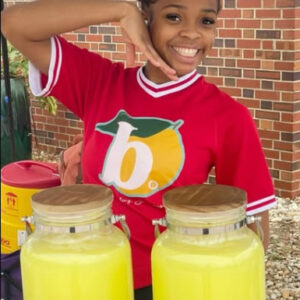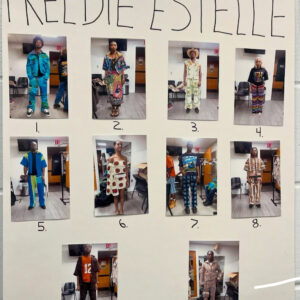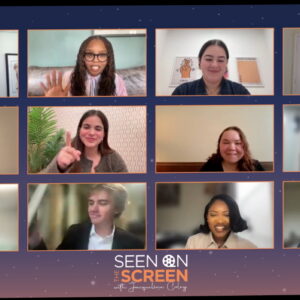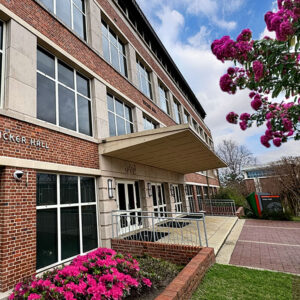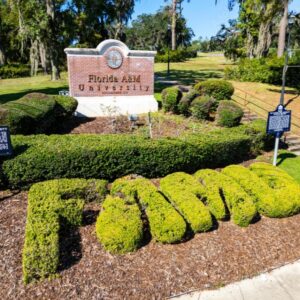News | June 3rd, 2020
Miami Joins the Fight for Floyd’s Justice
By: Erika Pierre
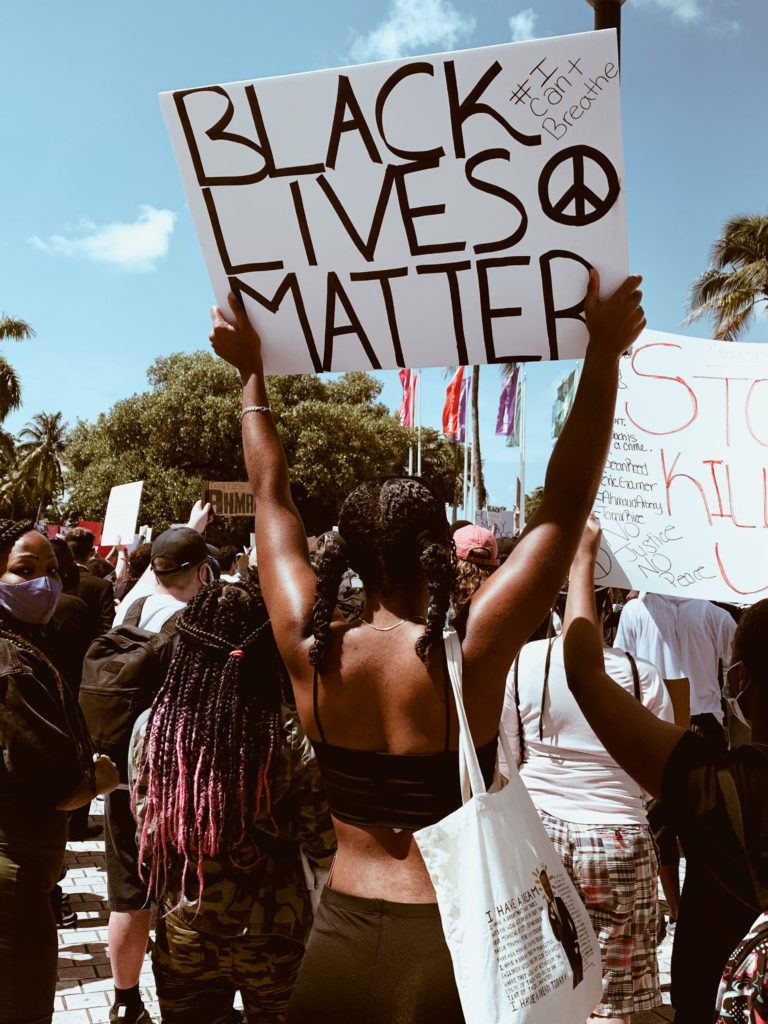
To protect the privacy and ensure the safety of our sources, no names will be used in this coverage. We understand that journalism stands on the foundation of ethics and objective storytelling, but we, as a publication, also recognize that we hold a responsibility to not endanger protesters.
In this story, Florida A&M University student and Miami native, Erika Pierre, renders her firsthand account of the Miami protest Saturday, March 30, 2020.
MIAMI — The year 2020 has been a wrenching timeline from the sudden death of Kobe Bryant to a worldwide COVID-19 pandemic shifting into the new normal. As everyone started grappling with this swift series of events, one thing didn’t come to much of a shock — the death of another black man at the hands of police.
On May 25, 2020, footage emerged of George Floyd’s death during his arrest by Officer Derek Chauvin in Minneapolis, Minnesota. Chauvin is seen applying unnecessary force by kneeling on the neck of Floyd, despite Floyd’s plea that he could not breathe.
After the incident spread via social media, the fever pitch of anger, grief, and confusion soon hit Minneapolis. For many across the nation, Floyd’s death dredged up a deepening confusion as to why the cycle of hatred and racism is systemically evident in law enforcement.
An unprecedented number of rallies have formed to protest the lives of black people who have been murdered by those who have been sworn in to serve and protect. Most of these protests, however, are not only fighting for George Floyd but for Ahmaud Arbery, Eric Garner, Michael Brown, Tamir Rice, Sandra Bland and the unsettling number of police brutality cases that have not been rendered their due justice.
On Saturday, May 30, 2020, the city of Miami gathered to demand justice for George Floyd. The demonstration, which was one of several in the city, started approximately at 3 p.m. near Bayfront Park in Downtown Miami. The crowd of protesters started small but quickly grew in numbers.
Immediately, “No Justice, no peace,” the hallmark chant of Black Lives Matter protest, was shouted across the crowd. Miami has always been known as a cultural melting pot and its protest displayed just that. People of all races assembled together to protest against the injustices that took place in Minneapolis.
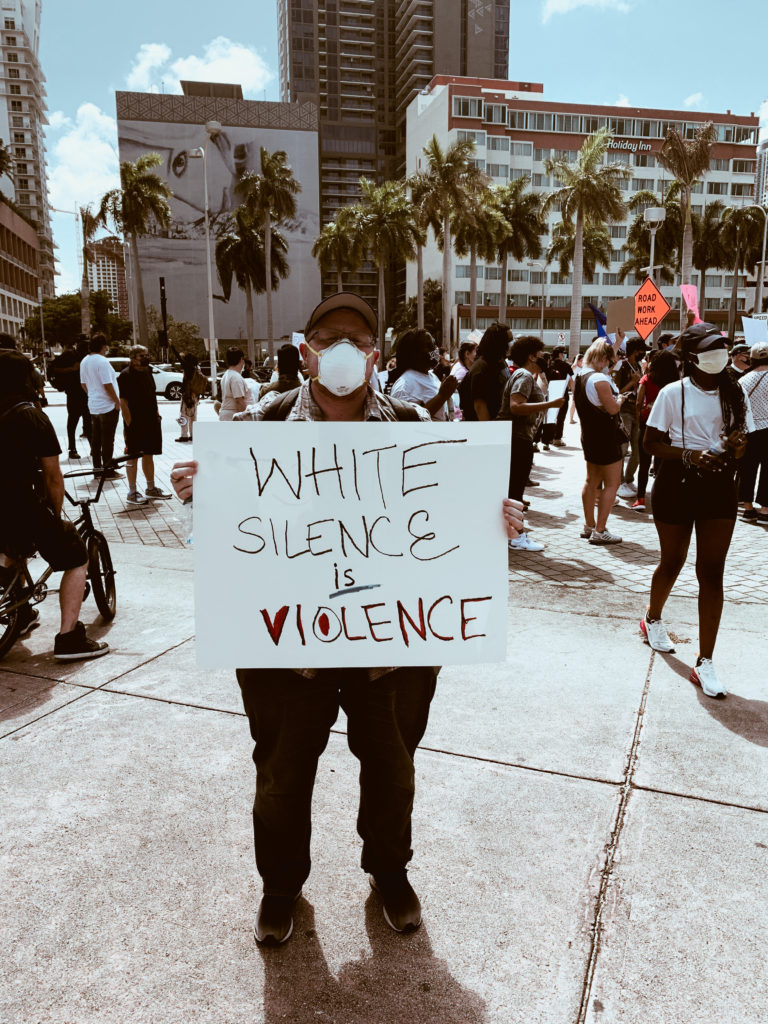 Protester holds up sign inscribed with the saying “White silence is violence.” Photo courtesy Erika Pierre.
Protester holds up sign inscribed with the saying “White silence is violence.” Photo courtesy Erika Pierre.
A white protester held a sign emblazoned with “White silence is violence.” He explained the sign addresses how the silence from white people is deafening and directly upholds systemic racism.
“White people have a platform to stand on when it comes to racism. If we aren’t standing on it, then we are part of the problem,” he said.
Like him, many non-black protesters believe that the system was designed to protect white privilege and that remaining silent is also remaining complicit.
“It is my duty as a human being to protect black lives from the police. That is why I’m here. I want to see the whole system change. All lives cannot matter until black lives matter,” he said.
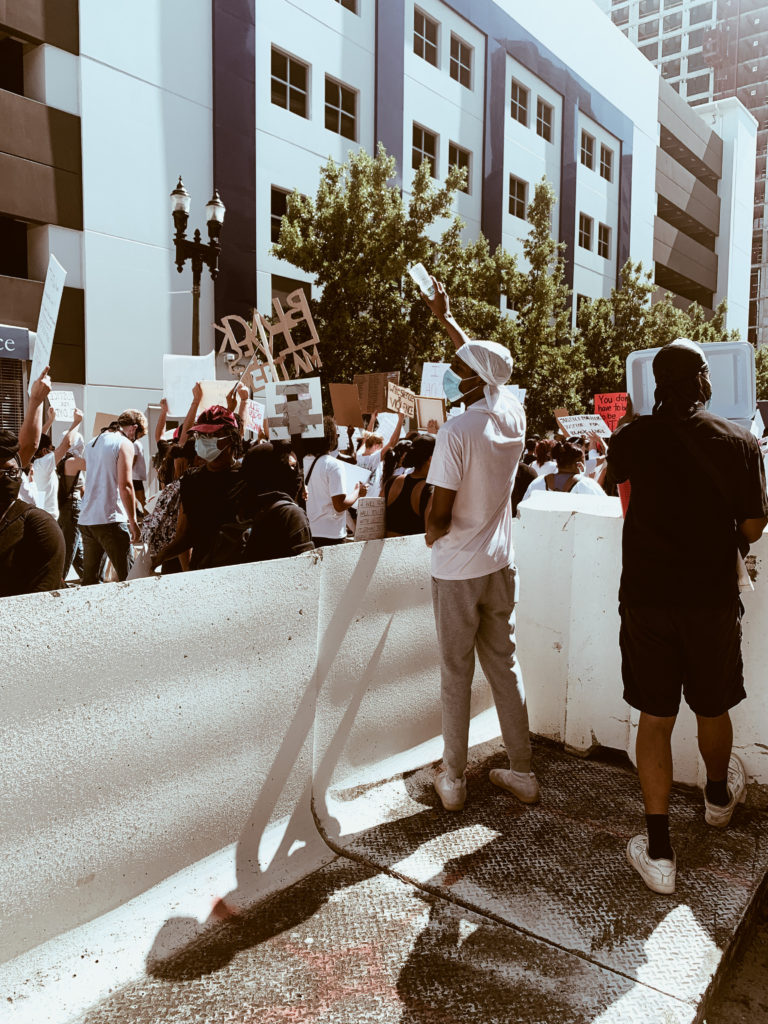 Two men stand behind a partition to hand out water to protesters. Photo courtesy Erika Pierre.
Two men stand behind a partition to hand out water to protesters. Photo courtesy Erika Pierre.
During the march, two men stood on the margins and handed out water. They are a part of many who are supporting protests by providing necessary provisions.
“It’s hot out here and we just want to make sure everyone is staying hydrated, ” one of the men said.
Throughout the protest, other individuals propped up makeshift stations to hand out snacks, hand sanitizers, and most importantly masks.
“Just because we are in a pandemic should not stop us from protesting. I just want to ensure everyone’s safety during the protest,” one of the protesters said.
Though the protest started off peaceful, some marchers grew agitated once more police presence arrived. Some began rapping “F Tha Police” by N.W.A., a song that served as the soundtrack of West Coast protests in the 90s.
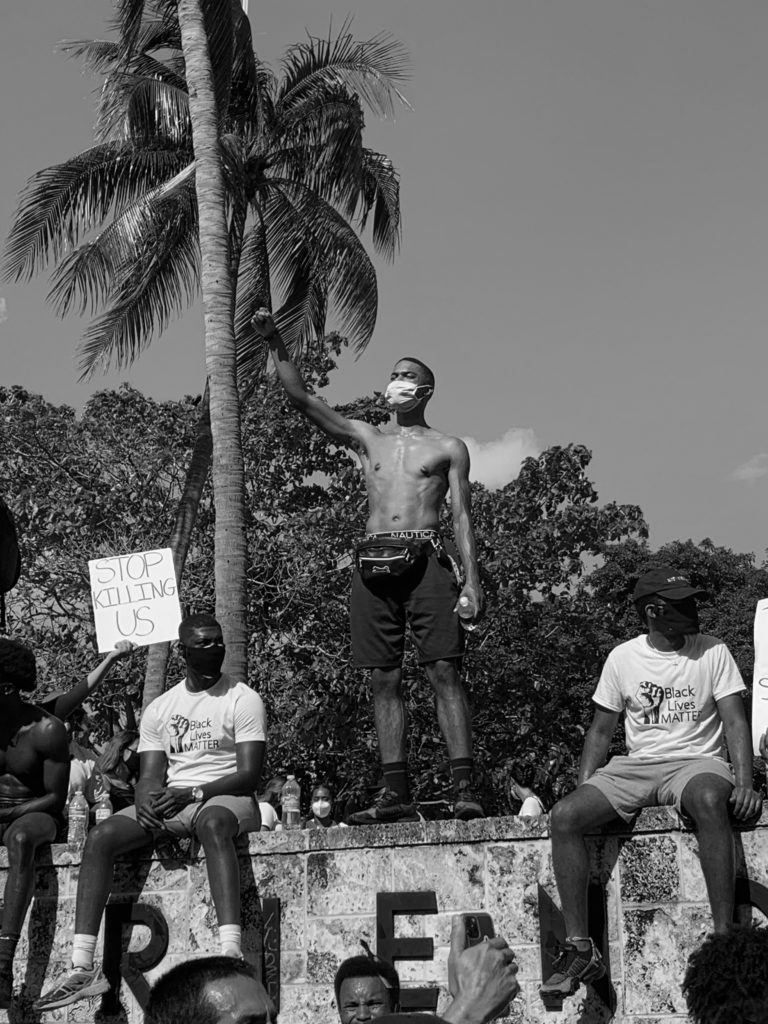 Photo courtesy Erika Pierre.
Photo courtesy Erika Pierre.
Things started to escalate when an unknown protester threw a bottle at a police car. The altercation quickly dissolved when an individual from the protest intervened to dissuade protesters and remind everyone of the peaceful nature of the rally.
As the protest grew in numbers, the passion from protesters grew as well. Call and response chants, such as “What’s his name? George Floyd,” seemed to be shouted with more immediacy. A solemn moment of silence was even held to grieve and honor the lives lost.
The protest soon made its way off the streets of Miami and onto I-95, near the Miami Police Station. The protesters chanted “Whose streets? Our streets!” as they paraded the highway, but were soon met with deescalation tactics from law enforcement.
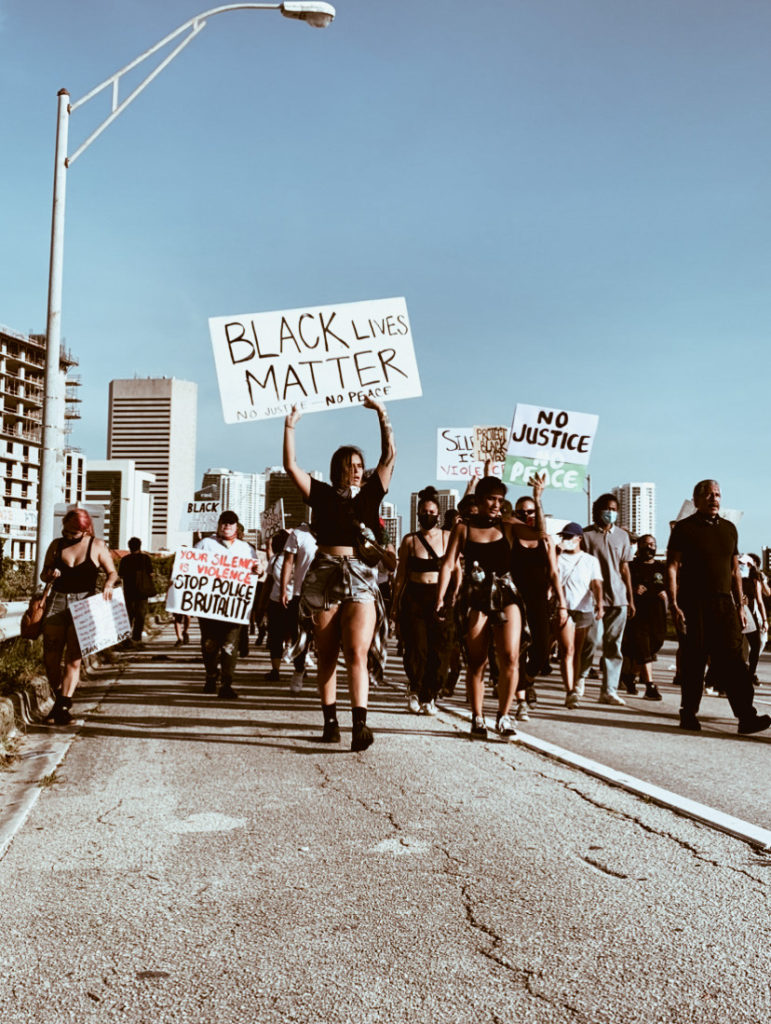 Protesters on I-95. Photo courtesy Erika Pierre.
Protesters on I-95. Photo courtesy Erika Pierre.
Shortly thereafter, Miami-Dade Police shut down 1-95. At the end of the night, 38 people were arrested and fires sparked across the city. In hopes to manage the tension, a curfew was set by Mayor Carlos A. Gimenez for 10 p.m.
Regardless of the later mayhem that ensued with law enforcement, protesters felt a sense of accomplishment in the city coming together, no matter what race, to speak for the unheard and to speak on the years of police brutality and racial profiling.
